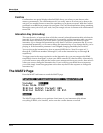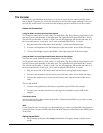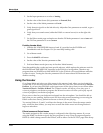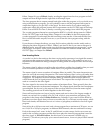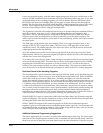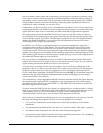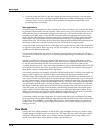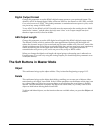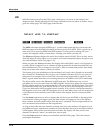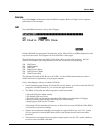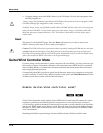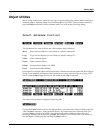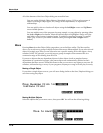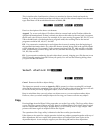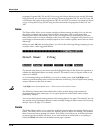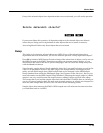
11-12
Master Mode
The Soft Buttons in Master Mode
Util
With this button you call up the Utility page, which gives you access to four analytic and
diagnostic tools. Double pressing the two center soft buttons from any editor is another way to
get to the Utility page. The Utility page looks like this:
||||||||||||||||||||||||||||||||||||||||
||||||||||||||||||||||||||||||||||||||||
||||||||||||||||||||||||||||||||||||||||
|Select|what|to|display:||||||||||||||||
||||||||||||||||||||||||||||||||||||||||
||||||||||||||||||||||||||||||||||||||||
||||||||||||||||||||||||||||||||||||||||
MIDI||Objects|Voices|Stealer|||||||Done|
The MIDI soft button launches MIDIScope™, a useful subprogram that lets you monitor the
MIDI messages from the K2661’s keyboard and those received via MIDI. This is a good way to
make sure you’re receiving MIDI from MIDI masters. It’s also good for making sure your
controls are assigned where you want them, checking your attack velocities, etc.
The Objects soft button displays the entire list of objects stored in RAM. This is an easy way to
check the object ID of any object you’ve created. You cannot manipulate objects, though, as you
can with the Objects Utility (see page 11-15).
When you press the Voices soft button, the display shows the K2661’s active voice channels as
you play. Blocks of capital Xs in six columns of eight represent the 48 notes that the K2661 can
play simultaneously. The Xs change to lower case xs, then to commas and periods, then finally
drop out as each voice releases or decays to silence.
This feature gives you an indication of the envelope level of each voice, though not necessarily
the volume level. Nonetheless, this can give you a valuable indication of how your voices are
being used. For example, if all or most of the voices are being represented by capital Xs, then
there’s a good chance that when voice stealing takes place an audible voice will be reallocated.
The Voices utility works a bit differently for KB3 programs. The K2661 uses one voice of
polyphony for every two tone wheels in a KB3 program. In the Voices utility, the voices used by
the tone wheels appear as Xs, meaning that the voices are used for the KB3 program. They don’t
get reallocated at any time, since they’re always on, even if you’re not playing any notes. Any
voices not dedicated to a KB3 program behave normally. So if you have a setup that contains a
KB3 program in one zone, and VAST programs in one or more other zones, you can monitor the
voice allocation of the non-KB3 voices in the section of the display that isn’t constantly filled
with Xs.
Use the Stealer soft button to select a display that will show how the K2661 is allocating its 48
voice channels. When you trigger a note, the note number will appear in one of the display’s
three columns, and will remain visible while the note is sustained. The four-digit numeral you
see is an internal value that has no direct significance.
As long as fewer than 48 voice channels are being used, new note numbers will appear as you
play additional notes, and the note numbers for notes that have decayed or have been released
will disappear. When all 48 voices have been activated, the display will show which voice
channels are shut off (“stolen”) to enable new notes to play.
Press the Done soft button when you are finished with the Utility page. This is the same as
pressing the Exit button.



